7 Major Ports and Terminals in Djibouti
Known as the Pearl of the Gulf of Tadjoura, the Republic of Djibouti is a low-middle income country located in the horn of Africa or the Somali peninsula. It has a hot climate and barren lands with limited natural resources, hence it is dependent on other countries for meeting its food requirements. Its industrial sector is also underdeveloped due to a lack of infrastructural and technological development.
Djibouti’s only asset is its favourable geographical location amidst the Red Sea and the Gulf of Aden. Hence, the country’s economy hinges on the services sector, acting as a regional transhipment hub and a refuelling centre for ships passing through the Red Sea.
Despite many problems like alarming poverty rates, unemployment, lack of education and an unskilled labour force, Djibouti has invested heavily in building new ports and modernising existing infrastructure. It has also attracted considerable foreign investment from China and other European nations.
Ports in Djibouti ship grains, coffee, salt, hides, dried beans, cereals, chalk, and wax, produced in the neighbouring countries, particularly Ethiopia. Djibouti has minuscule exports and most of its imports comprise fuel, food and machinery, arriving from Saudi Arabia, China, India, Indonesia and the United States.
Let us review the 7 major ports and terminals of Djibouti.
1. Port of Djibouti
Djibouti is the principal seaport of the country lying at the southern entrance of the Red Sea near the Tadjoura Gulf and the Gulf of Aden. Positioned at the confluence of key international trade routes linking the three continents of Asia, Africa and Europe, it has evolved into a regional transhipment hub serving the major African ports and landlocked countries like Ethiopia, apart from handling the sea-borne trade of the Republic of Djibouti.
It has enormous scope for growth and expansion. To attract foreign investments and businesses, the authorities have refurbished the port infrastructure, constructed additional berths, undertook dredging operations and inaugurated new terminals. These activities have significantly increased port capacity in the last three years.
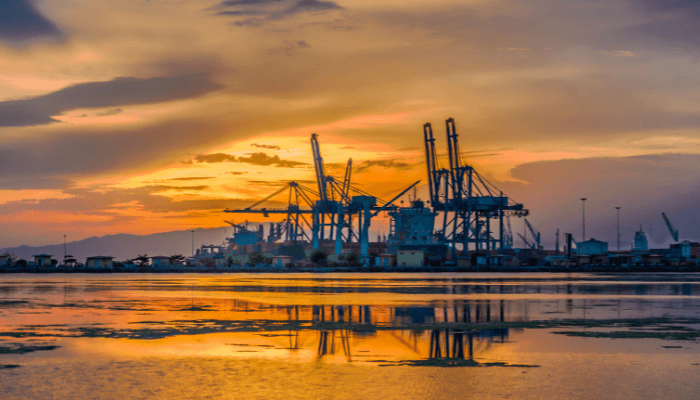
Also, new facilities like an LNG terminal, a business zone, ship repair yards, a crude oil terminal, an international airport, and railway lines connecting Tadjourah, Mekele, and Addis Abeba with the port are other mega projects being implemented in Djibouti.
After completion, it is estimated that the port would contribute immensely to the growth of the nation’s economy, leading to the emergence of the small African nation as the linchpin of global maritime commerce. Presently, the port serves as an industrial port and a fishing harbour. It also has dedicated passenger berths for accommodating river barges and small ferries. The port handles general cargo, liquid bulk, dry cargo, breakbulk, automobiles and livestock.
Port History
The nation of Djibouti was a French colony in the 18th century, hence the city of Djibouti was segregated into an African quarter and the European residential centre located near the main market. This division is still visible today through the starkly different architectural styles reflected by the buildings of a by-gone era.
Though the foundation of the modern port was laid by the French, Djibouti as a crucial regional shipping route existed for 3500 years. A meeting point of Asia and Africa, the Red Sea was a region of contact and trade used by Egyptians, the Phoenicians, the Romans, the Greeks, the Byzantine, the Arabs, and finally by the Europeans who sailed on its waters for discovering the spice route.
Port construction and expansion
The Port of Djibouti was built in 1888 by Leonce Lagarde, the first French governor of Somaliland. After it became the capital of the colony, it was further expanded to allow landlocked Ethiopia to engage in Maritime trade. Hence, berths were constructed and it was integrated into the railway system by 1917.
It became a free port in 1949 and developed as an international port for handling a large volume of cargo traffic. A new period of port expansion began in the 1980s with the coming of containerisation, leading to the development of Djibouti’s first container terminal which became operational in 1985.
Container Terminal
The Djibouti container terminal covers 22 hectares of land area and is easily accessible via roadways and railways from numerous regions such as Ethiopia and Eritrea. It has an annual handling capacity of 350,000 TEUs and is visited by over 1300 container ships. Cold storage facilities are available for perishable items like fruits and vegetables. It has a 2500 m2 container yard fitted with 126 reefer points for handling reefer containers.
The facility has two container berths covering 180 m and 220 m with water depths of 10 m and 12 m for accommodating 8000 TEU vessels. A new berth with stern ramps is being constructed to accommodate roro carriers.
It is equipped with the latest port equipment such as five ship-to-shore gantry cranes capable of lifting 50 tonnes, 6 reach stackers, 9 forklifts, 10 port trucks and 4 trailers.
Bulk terminal
The Bulk terminal has three specialised berths spanning 560 m for accommodating dry cargo such as grains, fertilisers, sorghum and clinker. The facility handles 8500 tonnes per day and can store up to 29,000 tonnes of wheat and 40,000 tonnes of fertilisers in 8 silos. It also contains open yards for keeping breakbulk and project cargoes.
Storage facilities
Djibouti port has many public and private warehouses covering 135645 m2. Vehicle storage and coal storage facilities are available in zone PK11 consisting of 6 warehouses and a livestock shed.
Djibouti Port has a 120 tonne-capacity weighbridge and a floating dock weighing 1750 tonnes equipped with a floating crane. It measures 50 m lengthwise, 26 m breadthwise and has a water depth of 12 m.
2. SGTD Terminal
The SGTD terminal was opened in 2009 and has an annual handling capacity of 1.2 million TEUs. It can accommodate super post-Panamax container ships like the Ivan Hoe owned by CMA CGM and the Cosco Indian Ocean operated by Cosco Line.
The terminal boasts the highest quayside productivity in the entire African continent, thus reducing waiting times and offering swift services.
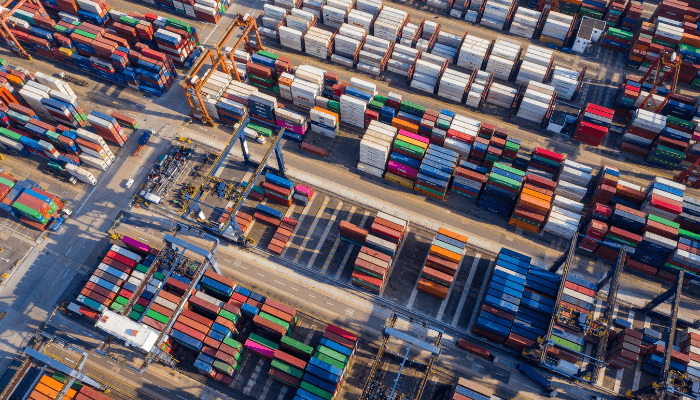
It has a total berthing line covering 1050 m and is equipped with 9 super post-Panamax dock cranes. The 18 m draft allows the terminal to accommodate the latest generation ocean-going vessels. It is also directly linked to the Djibouti-Addis Ababa railway line.
3. Doraleh MultiPurpose Port
The multipurpose port of Doraleh is situated in the western part of the city of Djibouti. A subsidiary facility of the Djibouti port, it was inaugurated in 2017 and was primarily built to relieve congestion at the older Doraleh port. It was designed to handle 8.2 million tonnes of general cargo and over 200,000 TEUs.
The new Doraleh port can accommodate Capesize vessels weighing up to 100,000 DWT and has one of the most modern facilities in Africa. It has specialised terminals for handling bulk cargo, breakbulk, containers and RORO.
The port covers 690 hectares of land area and comprises 6 berthing facilities with a 1200 m quay length and a water depth of 15.3 m. The 590 million dollar Doraleh port project is still underway, as the authorities plan to expand the port further by extending the quay line to 4130 m by building 11 additional wharves.
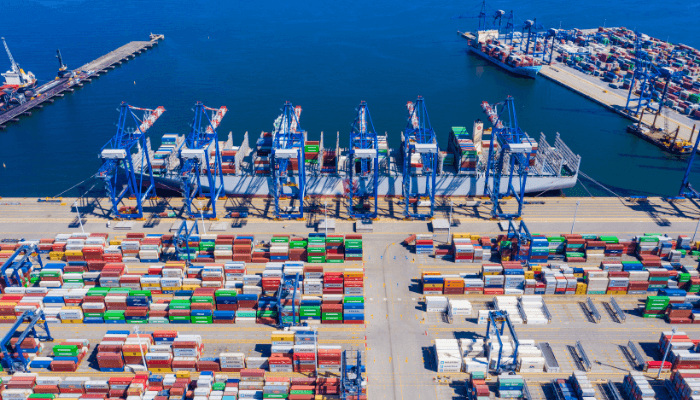
It has fully functional port equipment consisting of 12 quay cranes serving the conventional berths, 4 mobile cranes of 50-ton each for container handling, 2 RMG of 40 tonnes and 7 reach stackers.
The port also has 40,000 vehicle slots and a discharge capacity of 600 tonnes per hour. It contains 6 mobile bagging machines and two silo tanks for storing 85,000 tonnes of grains and 145,000 tonnes of fertilisers.
It has ample storage space including 45,000 m2 of open yards and 10 warehouses. It also contains a 20,000 m2 yard for keeping bagged cargo and a 32,000 m2 yard for storing dry cargo.
4. Damerjog Livestock Port
The Damerjog port was funded by the China Merchants Group which invested 70 million US dollars for its construction. Built by China Civil Engineering Corporation Ltd, it is part of the Djibouti Damerjog industrial zone. The port was inaugurated in 2017 and is a livestock export facility with estimated earnings of up to 500 million dollars per year.
The terminal has a 700 m long quay capable of accommodating 5 livestock carriers. It also has a 5-hectare transit area to keep arriving cattle. It also has an animal collection area covering 50 hectares with a capacity of 155,000 heads.
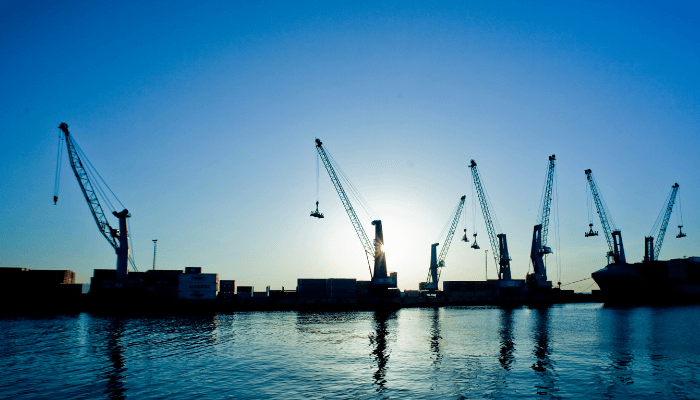
There are four sub-divisions between the terminal and the reception area including a veterinary department adjacent to the animal shed for treating sick or injured cattle. During the covid pandemic, a modern well-equipped quarantine area and a barn was constructed as an additional healthcare security measure. Damerjog port can handle 10 million heads of livestock annually.
5. Port of Tadjourah
Tadjourah is one of the oldest towns in the country. It is also one of the poorest regions in dire need of development. Hence, the government constructed the Tadjourah port for boosting the economic activities in the area, including tourism, animal husbandry, vegetable cultivation, trade and fishing. Presently, the first phase of the project has been completed. It generated new employment opportunities and reduced migration to the capital city.
Around 90 million dollars were spent on the development of Tadjourah port and its facilities. It was designed as a general cargo port but handles exports of potash on its two linear quays covering 455 m with a depth of 12 m. It is ideally located to serve the hinterland and can accommodate ships weighing up to 65,000 DWT.
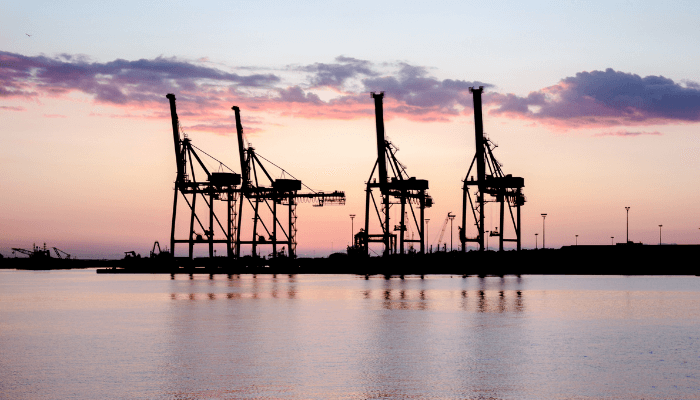
The port covers 40 hectares and is equipped with a potash handling system capable of processing 2,000 tonnes per hour. Potash production is concentrated in Ethiopia’s Tigray region which ships large quantities of the compound through the Tadjourah port. It also has a 190 m RORO berth and a total handling capacity of 4 million tonnes each year. Opened in 2017, the port also plays a major role in handling the imports of Ethiopia.
6. Port of Ghoubet
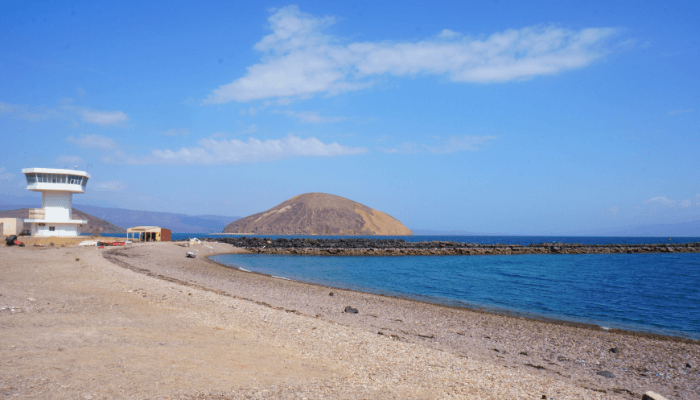
An important component of the Lake Assal Mineral Terminal project, Ghoubet port became operational in 2017 as a major salt exporting facility. It has modern equipment and a semi-mechanised operating system. Situated 45 km south of the Gulf of Goubet, the port has generated employment in northern Djibouti.
The facility consists of a liner quay measuring 400 m lengthwise with a draft of 15 m, capable of accommodating 100,000 DWT ships and yearly cargo traffic up to 5 million tonnes. It has 4 storage warehouses and 2 salt factories that are being constructed near the port area.
7. Horizon Terminal
The Horizon terminal or the Djibouti Liquid terminal is dedicated to the storage of chemicals and petroleum products. Opened in 2005, it is operated by Horizon Djibouti Holdings and is owned by Emirates National Oil, Independent Petroleum Group etc.
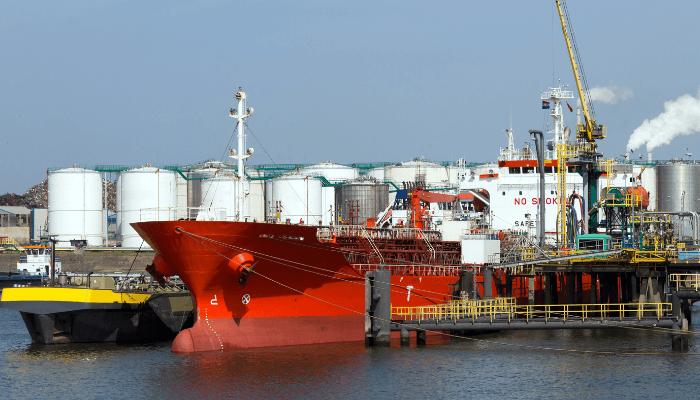
It is a modern petroleum terminal in the East African region, equipped with deepwater oil jetties and 31 large storage tanks for meeting the regional and national oil demands. It also provides logistics-related services.
The intermodal terminal has a storage capacity of 371,000 m3 and two berths for accommodating 30,000 DWT and 80,000 DWT oil tankers.
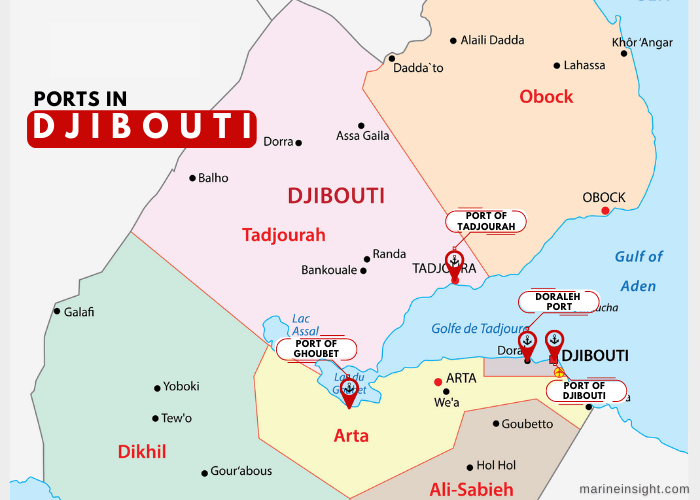
You might also like to read:
- 7 Major Ports in Sweden
- 7 Major Ports in Malaysia
- 5 Major Ports of Sri Lanka
- 2 Major Ports in Monaco
- 6 Major Ports in the Bahamas
Disclaimer :
The information contained in this website is for general information purposes only. While we endeavour to keep the information up to date and correct, we make no representations or warranties of any kind, express or implied, about the completeness, accuracy, reliability, suitability or availability with respect to the website or the information, products, services, or related graphics contained on the website for any purpose. Any reliance you place on such information is therefore strictly at your own risk.
In no event will we be liable for any loss or damage including without limitation, indirect or consequential loss or damage, or any loss or damage whatsoever arising from loss of data or profits arising out of, or in connection with, the use of this website.
Disclaimer :
The information contained in this website is for general information purposes only. While we endeavour to keep the information up to date and correct, we make no representations or warranties of any kind, express or implied, about the completeness, accuracy, reliability, suitability or availability with respect to the website or the information, products, services, or related graphics contained on the website for any purpose. Any reliance you place on such information is therefore strictly at your own risk.
Do you have info to share with us ? Suggest a correction

About Author
Shilavadra Bhattacharjee is a shipbroker with a background in commercial operations after having sailed onboard as a Third Officer. His interests primarily lie in the energy sector, books and travelling.
Latest Maritime Knowledge Articles You Would Like:
Subscribe To Our Newsletters
By subscribing, you agree to our Privacy Policy and may receive occasional deal communications; you can unsubscribe anytime.















